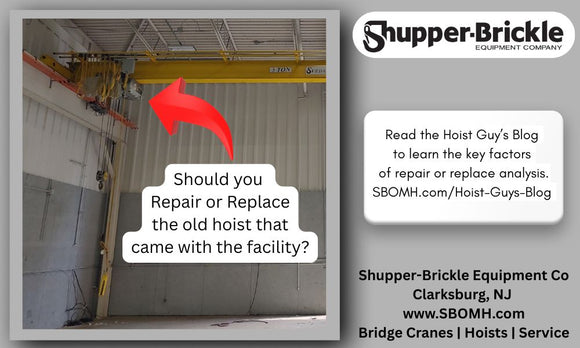
Do you need a manual, electric or air-powered hoist? FAQ's
Andrew T. Litecky
Welcome to The Hoist Guy's Blog, where our resident Hoist Guy Andrew T. Litecky shares his knowledge and experience of many years in the overhead material handling industry, this time with a little hoist FAQ session.
Manual, Electric & Air-Powered Hoists
What type of hoist is best for your uses from manual, electric or air-powered? When is a wire rope hoist best for the job? Here are some frequently asked questions about hoist types and uses.
What are the benefits of manual hand-chain hoists, chain falls, and lever hoists?
Manual chain hoists, chain falls, and lever hoists are the most basic type of hoisting equipment. They’re ideal for short lifts in maintenance use, where electric or air power isn’t available, in lower capacities or where portability is critical. Manual and lever hoists are inexpensive and easy to maintain.
When should I use an electric-powered chain hoist?
Where electricity is available, an electric-powered chain hoist is an economical and effective choice for loads up to 5 tons. Electric chain hoists lift loads quickly and smoothly, and a dual-speed option maximizes accuracy in positioning. Chain requires less initial investment than wire rope, though it’s not ideal for heavier loads or long lifts.
When should I use an electric-powered wire rope hoist?
Electric wire rope hoists are used for heavier loads, usually 5 tons or higher, or when the hoist is operated from a bridge crane. Wire rope is also used for lifts of 20 ft or more where the lifted load would interfere with a chain container.
While requiring a higher initial investment, wire rope hoists offer maximum lift, speed, and flexibility of design.
When should I use an air-powered or pneumatic hoist?
A pneumatic or air hoist operates by using compressed air or compressed nitrogen. Benefits of an air-powered hoist include better control speed, higher duty cycles, smaller size, and no risk of electrical shock. Because this equipment is powered by compressed air, it’s safe for hazardous locations, as defined by the National Electric Code. Spark resistant features are also available.
While air hoists have a substantially simpler design than the electric-powered equivalent, they have a higher operational noise, slower lifting speeds, and require plant air pressure of 90 PSI.
Where to buy hoists?
Shupper-Brickle supplies hoists of all types and answers all hoisting questions. Contact us about your overhead lifting application or to learn more about the material handling products that best meet your needs.


